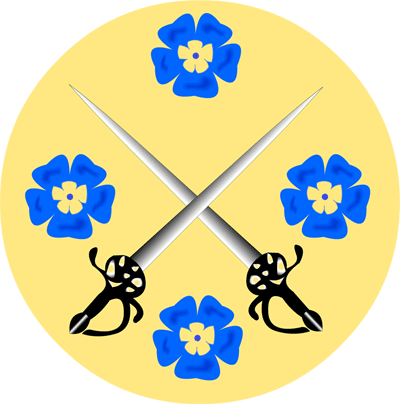An Article on Duels (2 of 6)
Benvenuto tutti.
This time I would like to continue our examples of duels. Or first one is a duel with twelve people involved. Again, this account comes from “The Sixteenth-Century Italian Duel: A Study in Renaissance Social History” by Frederick R. Bryson, Ph. D., The University of Chicago Press, Chicago, IL, 1938.
A duel “alla macchia” which is similar to a state duel, since it occurs between two factions in Sassoferrato in 1567. The problem seems to have occurred when a loan of 5 paoli (about 2 + lire) taken by a son of Meo Jani from Jofo Baronio caused a dispute, which led to a feud, between the Jani and Calderani families. During the course of this feud a “cartello”, or a publicly posted challenge for a duel, was posted on August 29, 1566 by Girolamo Severi, also known as “Tempesta”. The “cartello” called for six persons to a side and swords and daggers were proposed as the weapons to be used. An accepting “cartello” was placarded on May 10, 1567 (over eight months later) by Ottaviano Calderari (“Calderani”?), nicknamed “Tondo”, and attested to by Gio. Paulo Nobile, Girolamo Parmelini and Roberto Mercurio.
The acceptance agreed to the terms but added that no armor be used and that it should be a fight to the finish. M. Calderari did note, however, that he would have preferred to fight with Severi alone, but since others in his faction insisted they be allowed into the contention, he would accept the terms for a multi-person duel. The acceptance further stated the following would be involved in the duel: His brother Menco, his cousin Prefetto, Gio. Maria Celli, Ugo di Giusto and Captain Villano Cozzi. [As a side note the name Maria is normally a female form which means it is possible that a woman was fighting in this duel. However, Italians would occasionally name a male child with a female name, or vice-versa, so the name alone is not a perfect indicator of this.] It was also noted that Captain Cozzi had already received a personal challenge from Gio. Pietro Honorio dello Staffolo, that they be paired together in the ensuing fight. Menco also requested that his opponent should be Fulgineo Olimpi. [This may imply that such melee fights were, effectively, a group of paired-off fights, at least at the beginning of the duel.] It does go on to state, however, that they would face whichever six persons Severi chose.
The acceptance went on further to proclaim that the Calderari faction would accept that all their differences, if agreeable to the opposing faction, would be settled by this group of champions, and as such it was hoped that this duel would, thereby, bring peace to the town. The acceptance required a reply within twenty days and that some spot on the outskirts of the district be selected by Severi for a duel “alla macchia”.
The narrative as offered by Silvia Venezian in “Olimio da Sassoferrato. Poesia popolaresca marchigiana nel sec. XVI.” In Appendix II published in Bologna, IT, 1921, proclaims that the duel was fought at a place called La Selva in the frontier between lands belonging to the pope and those of the Duke della Cornia. Apparently all combatants were killed except one. According to Venezian, Tradition would have that Pope Pius V anathematized this district because of this duel and as a result the district suffered a variety of misfortunes. However after great entreaties by the people the curse was reversed and the pope send a bishop or archbishop to give a formal blessing to the region when a jubilee was given to rejoice this removal.
Next time: Some discussion on armor in the duel.
Honos Servio,
Lionardo Acquistapace, Barony of Axemoor, Meridies
(mka Lenny Zimmermann, New Orleans, LA)
“A soldier uses arms merely with skill, whereas a knight uses them with virtuous intention.” - Pomponio Torelli, 1596.
